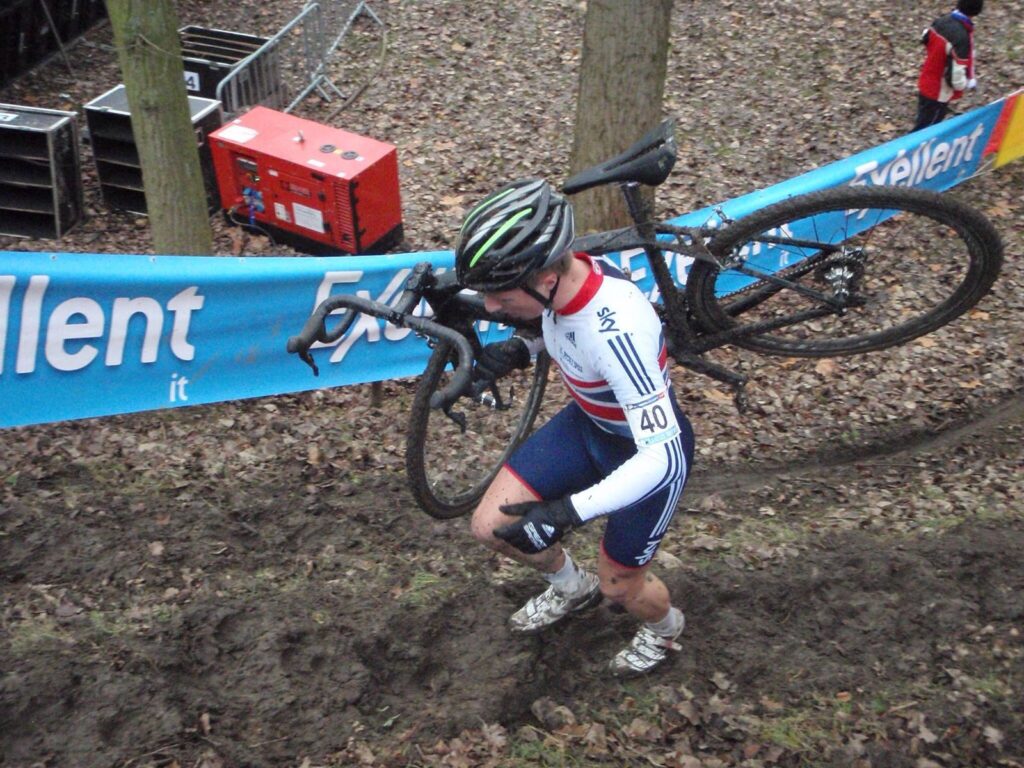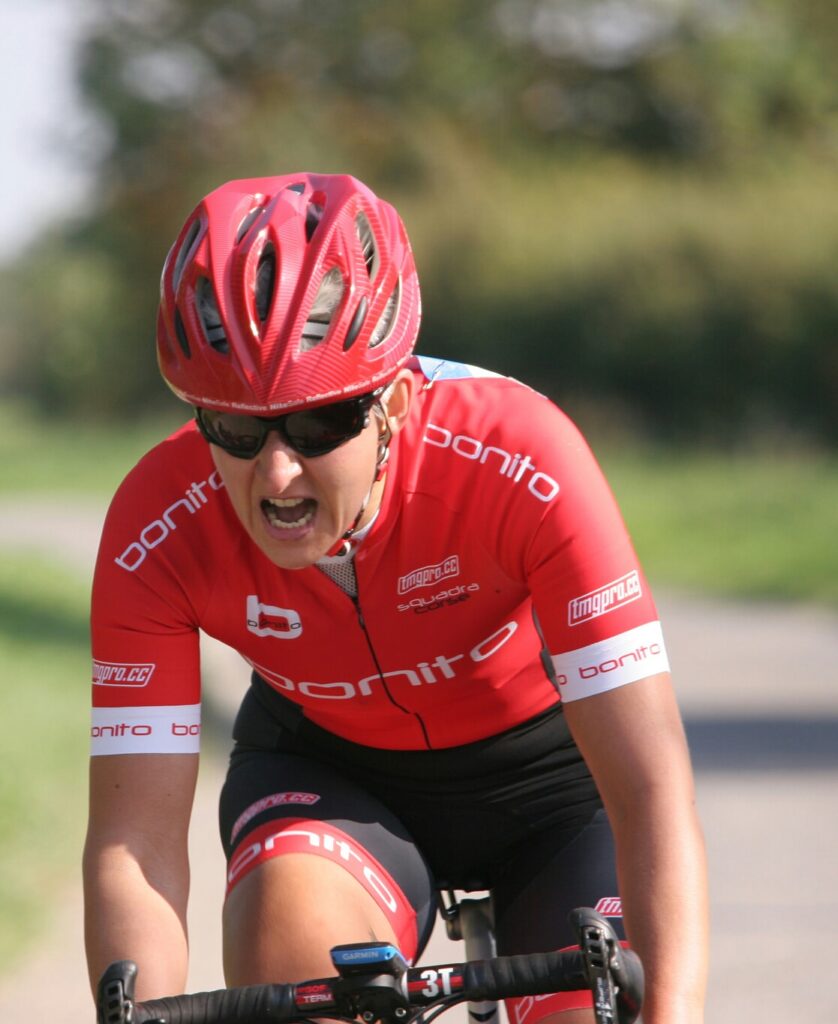
A question I often get asked is, “Do I need to include running in my cyclocross training? After all, if cyclocross races involve an element of running surely it must be useful to practice this in training.
The majority of cyclocross races are mostly ridden on the bike with relatively short periods where the rider dismounts to tackle hurdles or steep climbs. However, as the 2016 edition of the British Cyclocross Championships , Shrewsbury, illustrates, sometimes there is no choice but to run large chunks.
I firmly believe that running should be included in your cyclocross training. As a cyclocross coach, I always include an element of running as part of the training I prescribe. There are a multitude of reasons for this but here are the six main ones.
1. Being good at running can help you win races
In the case of the 2016 National Championships, two of the U23 riders I coached were spending 3 to 4 minutes running per lap as the course was so muddy. This doesn’t happen very often, although I do remember Stewart Marshall winning the Junior World Championships in 1986 when large swathes of the course had to be run. When the surface you are riding on becomes difficult it may often be faster to run than ride and in some cases it may be impossible to get sufficient traction to keep the bike moving. Many amateur riders make the mistake of attempting to stay on the bike, almost at any cost, and invariably lose time. Being skilled at running in a cyclocross race can really help you out in these circumstances.
I was spoke to Sean Dunlea about this and he commented on how a simple flat, tight corner can get muddy enough that it is much faster to run, yet many people fail to recognise this. I jointly led a coaching session for young Eastern Cyclocross League riders where I used a variety of scenarios to get the riders actively involved in problem solving and taking responsibility for making their own decisions about the best approach to negotiating difficult, muddy corners. The outcome of the exercise was that they discovered there is no single optimal approach. It depends upon both the rider and how the track conditions develop over the course of the race. What is for certain is that at some point running has to be in your armoury as a rider. And running has to be part of your cyclocross training.
2. Specificity in cylocross training is key
Whatever type of race you are competing in you need to practice the skills specific to that event. Just as there are a wide variety of surfaces you may be expected to cycle over, no two sections of running are the same. By preparing yourself for all eventualities in training you can arrive at a race with the necessary range of techniques to negotiate whatever the organiser has chosen to throw at you!
When training for cyclocross I not only advise riders to develop general running ability with regular endurance running, but also to practice running in competition specific scenarios. For example, practicing a bank dismount is helpful not only in developing the technique to exit the bike at speed, but also involves some pretty tough uphill running. If you are setting your own training use your imagination, think back to some previous races and then try different things in your training.
In a conversation I had with Helen Wyman I asked her to share her advice on running and she said, “I now do all my running in cross training so it is specific to the racing. I found running at a running track good because the track has wood chip and doesn’t make my legs so sore.”
3. Running activates different patterns of muscle recruitment to cycling
It doesn’t take a biomechanist to tell any cyclocross competitor that running and cycling involve different patterns of muscle activation. We all know that feeling of shock when you have been pedalling as hard as you can for several minutes and then have to jump off the bike and run. And of course, it isn’t just normal running: you have to push or carry your bike.
Unfortunately there isn’t any scientific literature as far as I am aware that has determined the differences in locomotion between running with and without a bike, but this doesn’t mean you can’t train to do it in your cyclocross training.
If you are new to cyclocross I would recommend finding a quiet field somewhere, first practice your mounting and dismounting techniques and then incorporate intervals of running between riding. More experienced riders can achieve the same things by training in the woods and using the terrain to provide episodes of running. Remember you cyclocross training should include running uphill and downhill as well as on the flat.
4. It is good for general cardiovascular fitness
To compete in cyclocross, or indeed any sport, you will obviously need a good level of cardiovascular fitness. Running is a great supplement to your cyclocross training which will help to improve your fitness and benefit your overall race performance regardless of how much running you end up doing in a race. There is a likely limit to this cross-training effect because ultimately the majority of races are spent riding. You’ll have to learn by trial and error what the right balance is between time spent running and cycling.
Cycling is also a low impact sport (unless you fall off your bike!) so the risk of developing musculoskeletal injuries is lower than for running. However, cycling isn’t good at increasing bone density like running and resistance training. This is why I recommend these exercises for all cyclists, particularly women who can lose significant bone mass during the menopause.
I would advise taking time to adapt to running by building distance slowly and if you are going to do a lot of running on roads and paths it would be advisable to think about your running technique. Research some good texts on the subject or seeking the advice of an experienced coach or runner. I also train runners so drop me a line if you’d like more advice.
5. It is a good way of fitting in extra cyclocross training when you have limited time or are without your bike
Do you have a spare half hour in your lunch break? Or maybe you’re away without your bike but still want to train? Go for a run! Elite riders have to get in big volumes on the bike so do relatively less running but amateur riders who have to go to work have less time so may want to do more running. One of the benefits of running over cycling is that you don’t need to lug your bike to work or on holiday with you – all you need is your trainers!
The beauty of cyclocross is that this running does not go to waste. It will make you faster at the running parts of a race and a better athlete in general. Another bonus is that because running is more strenuous than cycling, you can substitute a half hour run for a much longer bike ride and still get the same overall exercise load.
6. Running is a more appealing form of cyclocross training in bad weather
It’s the middle of winter and you look out of the window and see a howling gale and the rain falling in sheets. Cycling in that type of weather is not appealing when you know you’re going to be out in it for several hours and the road conditions might be dicey. However, running for half an hour often seems more do-able. You don’t have to worry about braking in wet or icy conditions, you don’t have to worry about car drivers driving inappropriately for the weather, you can just go for a quick run around the block and get back inside to warm up. The beauty of running is that because you are moving at a slower speed than you would be on the bike, you won’t get so cold. And of course, you do not have to clean your bike afterwards.
So, to summarise, running is definitely worth including in your cyclocross training as it is a good convenient form of exercise for the time-pushed cyclocross rider. It is a technique that is very important in racing and it may be a good alternative form of exercise on those days when the weather is just too unpleasant to train in.


